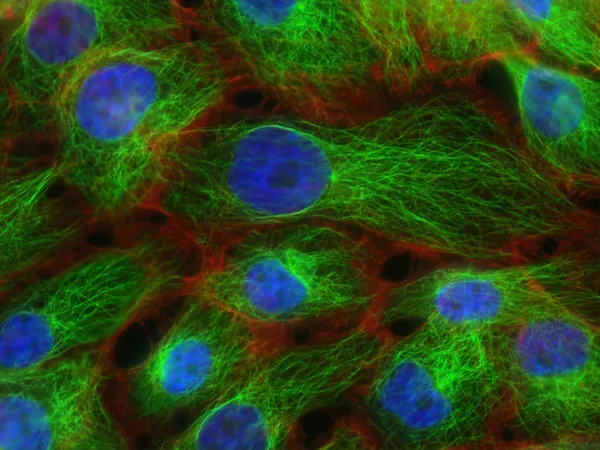
Mini-Tumors from Breast Cancer Cells Pave the Way for Revolutionary Treatments!
2025-01-03
Author: Rajesh
Introduction to a Groundbreaking Development
In a groundbreaking development in cancer research, a team of scientists has successfully cultivated mini-tumors, known as organoids, from the rare circulating tumor cells (CTCs) found in the blood of breast cancer patients. This incredible achievement, led by researchers from the German Cancer Research Center (DKFZ), the Heidelberg Stem Cell Institute (HI-STEM), and the NCT Heidelberg, represents a major leap forward in understanding treatment resistance in metastatic breast cancer—a leading cause of cancer-related deaths among women.
Challenges with Circulating Tumor Cells (CTCs)
Traditionally, CTCs have been notoriously difficult to isolate and propagate, which has severely limited research in developing targeted therapies. These elusive cells are responsible for initiating metastasis—the spread of cancer to vital organs like the liver and lungs—making them pivotal in understanding breast cancer’s aggressive nature. While advancements in treatment have improved outcomes for many patients, the challenge of addressing metastases, which often become resistant to therapies, continues to loom large.
The Breakthrough Study
The breakthrough study, published in *Nature Cancer*, showcases how the researchers managed to grow these tumor organoids directly from blood samples, eliminating the need for long and complicated processes involving animal models. This new method allows scientists to monitor tumor behavior on a patient-by-patient basis, providing valuable insights into the mechanisms of therapy resistance and metastasis.
Insights from the Research Team
Andreas Trumpp, a prominent figure in the research team, previously identified that only a small subset of CTCs possess the capability to seed new tumors. Remarkably, the organoids derived from these cells can be cultivated at different stages of the disease, paving the way for real-time monitoring of how tumors evolve and adapt to treatment.
Critical Survival Pathways Uncovered
Utilizing these organoids, the researchers uncovered a critical survival pathway involving the protein neuregulin 1 (NRG1), which interacts with the HER3 receptor on cancer cells and activates pro-survival signaling pathways alongside HER2. When therapies targeting these pathways are employed, the cancer cells often deploy alternative routes, such as the FGFR1 pathway, to evade treatment—illustrating the adaptive nature of these malignant cells.
Dual-Target Approach to Combat Resistance
The research team demonstrated that by simultaneously blocking both the NRG1-HER2/3 and FGFR pathways, they could effectively halt tumor cell proliferation and induce cell death in laboratory settings. This dual-target approach could revolutionize how we tackle treatment-resistant breast cancer, offering hope for more effective therapies.
Looking Ahead: Personalized Medicine
Trumpp emphasized the significance of this development: "The ability to cultivate CTCs and understand their resistance mechanisms allows us to devise novel treatment strategies and possibly even customize therapies tailored to each patient’s unique tumor characteristics."
Conclusion and Future Directions
With these exciting findings, the future of breast cancer treatment looks promising, as researchers now strive to design therapies that not only address existing tumors but also prevent the emergence of resistance and metastasis from the outset. Stay tuned for further developments as this research unfolds—a new era in personalized medicine might just be on the horizon!



 Brasil (PT)
Brasil (PT)
 Canada (EN)
Canada (EN)
 Chile (ES)
Chile (ES)
 Česko (CS)
Česko (CS)
 대한민국 (KO)
대한민국 (KO)
 España (ES)
España (ES)
 France (FR)
France (FR)
 Hong Kong (EN)
Hong Kong (EN)
 Italia (IT)
Italia (IT)
 日本 (JA)
日本 (JA)
 Magyarország (HU)
Magyarország (HU)
 Norge (NO)
Norge (NO)
 Polska (PL)
Polska (PL)
 Schweiz (DE)
Schweiz (DE)
 Singapore (EN)
Singapore (EN)
 Sverige (SV)
Sverige (SV)
 Suomi (FI)
Suomi (FI)
 Türkiye (TR)
Türkiye (TR)
 الإمارات العربية المتحدة (AR)
الإمارات العربية المتحدة (AR)